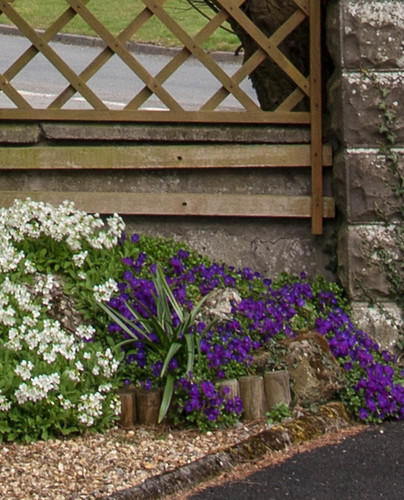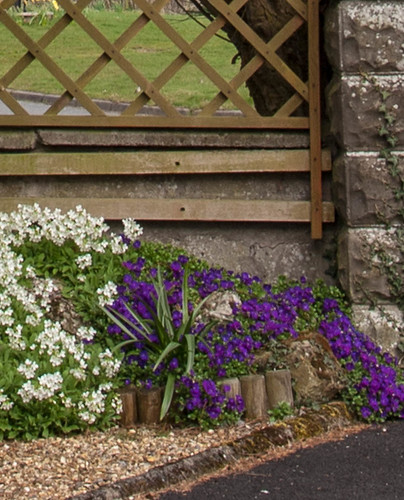A point I missed – perhaps even ducked - in my last post about tripods was that they should make the image notably sharper – because they provide you with a more solid base, and exercise 33 is asking us to test this on three pairs of photos.
I need to do a couple more pairs to complete the exercise as written but I thought I’d extend it a bit on the first exercise to see if I could spot the impact of image stabilisation – which if internet gossip is to be believed is claimed to soften images made on a tripod. So three shots 2 tripod mounted – one with and one without IS - and one hand held with IS. How much difference can I see? I did the test 3 times on shutter priority at 1/8, 1/60 and 1/200 of a second. At 1/8 the hand held shot was clearly inferior, and at 1/200 in the light I had available the aperture was sufficiently large that I felt it was not a fair test. I gave them all my standard processing as that is how I would normally view them. So here are crops from the three images at 1/60 hand held, tripod with IS and tripod without. The actual width of the crop was approx 525 pixels, which means on my screen these are equivalent to viewing the whole image blown up to about 24” across and 30” tall – from a distance of about 2 feet across my desk – or closer if I lean forward. And I’ll be honest I struggle to see much difference. The blur in the upper white flowers in the first one is caused by the wind, but the fence is perhaps very slightly softer. The grain in the edging and the stones is slightly sharper in the last one, but I have to admit to being surprised at how little difference there is.



I don’t quite know how to conclude this – as I’ve said in previous posts I have a bit of a love hate relationship with tripods, and I thought that this exercise might cause me to reconsider that, on the basis that I was simply sacrificing quality for no real gain. That would certainly be true at very small apertures, where shutter speeds were below comfortable handholding ranges, but it seems likely that the advent of effective IS has reduced the advantage quite a bit at higher speeds. This doesn’t mean I’m suggesting we can forget about them – there are a number of other reasons for using them, such as more precise composition, a general slowing down of the process which should engender more care in other areas and the ability to use graduated filters effectively, but I’m reassured that within certain parameters not using a tripod does not carry a significant penalty.
No comments:
Post a Comment